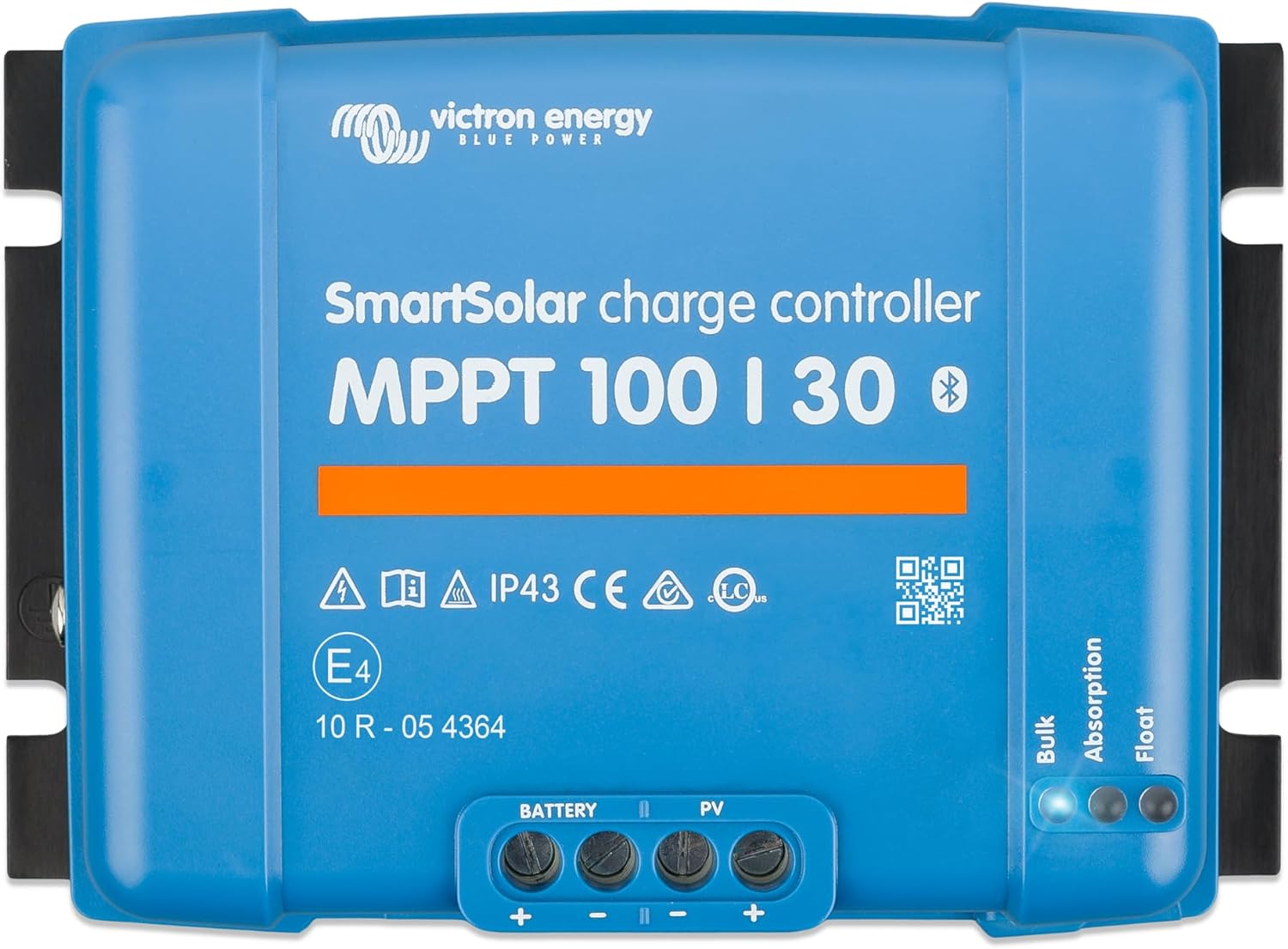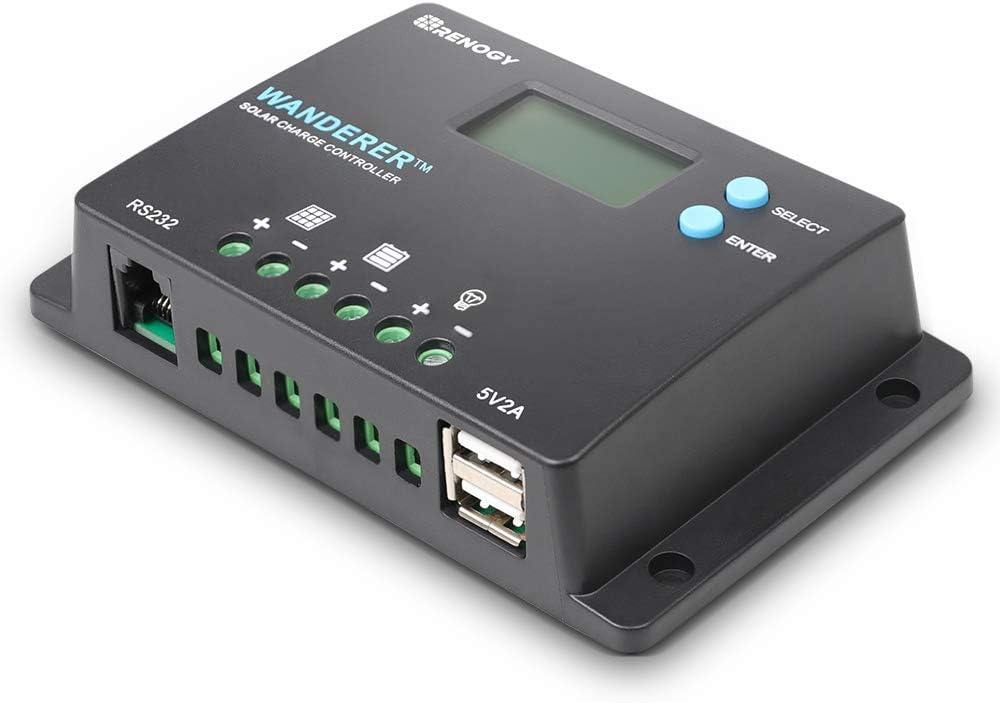A classic never goes out of style.
Way back in 2016 I posted the Off Grid Ham 100 Watts for $300 Solar Plant. Even today, that article is still hugely popular and one of the most viewed posts on this website. In a 2020 update, the $300 threshold not only held up, but it actually came in slightly lower than in 2016. It seems inexpensive off grid solar never goes out of style.
Seven years out from the original project, is it still possible? Could we still build a 100 watt solar power plant for three hundred dollars or less? Off Grid Ham reader Tim in Florida recently sent an email proposing an interesting twist: Could we do it with a lithium battery?
To keep the comparison accurate, we will maintain the same criteria as before. 1. The solar panel must be 100 watts. 2. The sealed battery must be at least 25 but not more than 32 amp-hours. 3. The controller must have extra capacity for a safety buffer. 4. All the components must be quality name brands. No cheap knockoff junk.
The surprising analysis.
It seems that after seven years it’s still possible to put together a 100 watt solar setup with a $300 USD budget. Here’s the breakdown:
- Renogy 100 Watt solar panel $80.00 ($88.00 in 2020; $129 in 2016)
- Morningstar SunSaver 10 amp controller $91.00 ($63.00 in 2020; $48.00 in 2016)
- 26 amp hour Power Sonic AGM battery. $60.95 ($61.95 in 2020; $59.00 in 2016)
- 20 foot (6.1 meter) MC4 cable $18.28 ($18.95 in 2020; 15.00 in 2016)
- Incidental expenses (taxes, shipping, etc) $49.00
TOTAL: $299.23
It looks like we could still pull it off…with less than a dollar to spare! Some context is needed. First, the panel and battery used in the original project are still in production so we are able to use them as an exact match this time. The controller specified above has a low voltage disconnect (LVD) feature that automatically disconnects the load if the battery voltage drops too low. This used to be an optional feature on Morningstar controllers that added about $30.00 to the price, but it seems Morningstar made LVD standard so now the lower cost choice is no more. Non-LVD versions were used in previous examples. That throws off our comparison by $30.00, but there is no way around it. off grid solar
Also, the $18.28 MC4 cable is a sale price. Normally they are $22.00. If they were not on sale we would exceed our $300 threshold, even if just a little. But for the forced purchase of an LVD-equipped controller, we’d easily be well under budget. The reduction in retail prices for solar panels, even with inflation, is remarkable. If solar panel prices had not dropped as much as they have since 2016, there is no way we could stay within our budget. off grid solar
There are respectably good controllers out there for less money (we’ll address that soon), but for now I’m sticking with Morningstar since that’s what we used in 2020 and 2016 and it is a well known, trusted brand.
The Lithium Alternative.
If you noticed we just barely made budget with a conventional AGM battery, then without even doing the math you know there’s no way we can do it with lithium. off grid solar
The Morningstar controller used in our last example is not compatible with lithium batteries, so we will go with a Victron Energy controller. Also, lithium batteries are considerably more expensive than AGM and it shows in the numbers.
Here’s the breakdown:
- Bioenno 30 amp hour lithium battery $278.00
- Victron Energy charge controller $135.00
- Same panel & cables as above. $98.28
- Incidental expenses (taxes, shipping, etc) $49.00
TOTAL $560.28
As we can see in these numbers, the battery alone costs nearly as much as the entire equivalent conventional AGM project. You could almost build two AGM-powered units for what this lithium version costs.
Cutting the costs down.
Five hundred and sixty bucks sounds like a lot, and it is. But it’s actually a pretty good deal for what you’re getting in the lithium version of our project, especially considering we’re using high quality components. If that’s too heavy for your budget, what can you do?
For starters, let’s revisit that battery. Bioenno is a premium product with a corresponding price tag. There are dozens of other 30 amp hour lithium batteries on Amazon for as little as $100.00. Bioennno is better than any of them, but is it $178 better? Is it worth paying nearly three times more? I will point out that a low-tier lithium battery is probably better than a good AGM battery.
Then there’s the charge controller. The internet offers an endless sea of cheap controllers in the sub-$30.00 range. Nearly all of them are junk and not worthwhile even for their super-low price. However, one in particular did get my attention.
The Renogy Wanderer 10 amp controller costs around $20 when not on sale and is compatible with lithium batteries. I haven’t used this exact device myself so I can’t say if it’s any good, but I’ve had very positive experiences with other Renogy products and think it’s a solid brand. I would definitely take a chance on it. Heck, they are so cheap you can buy two and keep one as a spare.
If we make the equipment changes, the AGM solar plant costs only $222.00 (replace Morningstar controller with a Renogy controller). The lithium version totals out at $261.28 (substitute battery and controller). This changes everything, doesn’t it? We are now well under our $300.00 goal and even lower than prices from 2020 and 2016!
The conclusion.
Here in 2023 we can still make a DIY 100 watt solar power plant for less than $300, but it requires some compromises and careful shopping. Upgrading to a lithium battery is possible if you are willing either to spend well beyond the $300 target or settle for less than high end components.
I especially want to thank the thousands of Off Grid Ham readers who made this such a popular and enduring topic. When I composed the original article in 2016, I had no idea it would still be relevant seven years later. If the demand is there, we’ll do this again in a few years and see if we can still pull it off.


Your link to the Bioenno battery in the article takes me to an Amazon page for Renogy solar panel cables.
Bioenno, in my opinion, is top of the line. All of the products they offer that I’ve bought in the past have been excellent. Expensive, yes, but as the saying goes you get what you pay for.
The solar equipment market is pretty crazy right now. New companies are springing up all the time, others disappear. A lot of the cheaper stuff you see is of questionable quality, to say the least, as you very rightly pointed out. Victron has been around quite a while and is very popular and well respected, especially in Europe. I wouldn’t hesitate to use their equipment. It’s expensive, but it’s good quality and they have a reputation of having good customer support, unlike a lot of other companies.
Solar panels seem to be coming down in price. I’ve been seeing prices as low as $0.28 to $0.37 per watt for special deals from some vendors, but those are for larger size panels and only if you buy a full pallet. Still that seems to be an indication that prices on smaller size panels may be coming down soon.
LIthium batteries remain very expensive and I haven’t seen much movement in prices recently. But I did see something pop up the other day that surprised me. I forget the manufacturer right now but it was a 48V 5 kWh capacity server rack style battery for $1,000. That’s a lot of money, yes, but up until now those batteries have been going for $1,500 – $1,800. None of the reviewers i follow has gotten their hands on one yet so no one seems to know if it’s real, a rip off, or what.
Thanks Chris!
Hello, Randy. The incorrect link has been fixed. Thanks for the tip.
I do agree that, at least for ham radio purposes, Bioenno is the “Rolls Royce” of batteries. I have a small Bioenno 10 amp-hour battery for my QRP porta-station and it’s better than anything else I’ve ever tried. Their customer support is A+ as well.
You are also right that a lot of off-brand solar equipment is popping up on the market. Unfortunately, almost all of it is low end junk. I’ll bet that the guts of these devices are all more or less the same and they just use different enclosures and slap a different logo on each one. I was surprised to find the Renogy unit for so little money. I don’t know if it’s junk or not, but I like Renogy a lot and would be willing to risk twenty bucks to find out.
Solar panels are now consistently under $1.00/watt even if you’re not buying bulk. I don’t know how much lower it can go; they’re already giving them away almost for free.
Lithium batteries are still the big sticking point, price wise. They have come down somewhat but in this area too I think we’re close to the bottom until some new technology replaces it or they develop a more efficient manufacturing process, neither which I believe will happen soon.
As always it’s great to hear from you. Thanks for checking in.
Battery link is still broken for me
Hi Bill, I’m not sure what’s going down, but I tested the link from two different devices and it did work.
A good read this morning. Charge controlers seem to be pricey if they have a good name. I believe in always get the best you can afford because those items will last longer and be more dependable.
Hi Jed, it’s the “buy once, cry once” principle. Luckily, for those who can’t afford/don’t need “the very best” there are some reasonably priced mid-range units.
“I’ll bet that the guts of these devices are all more or less the same and they just use different enclosures and slap a different logo on each one.”
You’re absolutely right about that. It happens even with the more expensive stuff too. The EG4 6500EX inverters I’m running are exactly the same as units being offered from MPP, Orient Power and one or two other brands. Only difference is the graphics on the outside.
I can’t seem to find out If any of the other LiFePO4 batteries are UL listed, but I know Bioenno batteries are!! I don’t like supporting Amazon, always seem to get ripped off on eBay, don’t want to order from the Chinese outlets (Ali Baba, et al)
Still saving the pennies and nickles for my solar setup!!!
Hi Phil, unfortunately finding good quality USA made batteries is almost impossible. I presume Bioenno is also foreign sourced, but you will get USA based support and a company that stands behind its products.